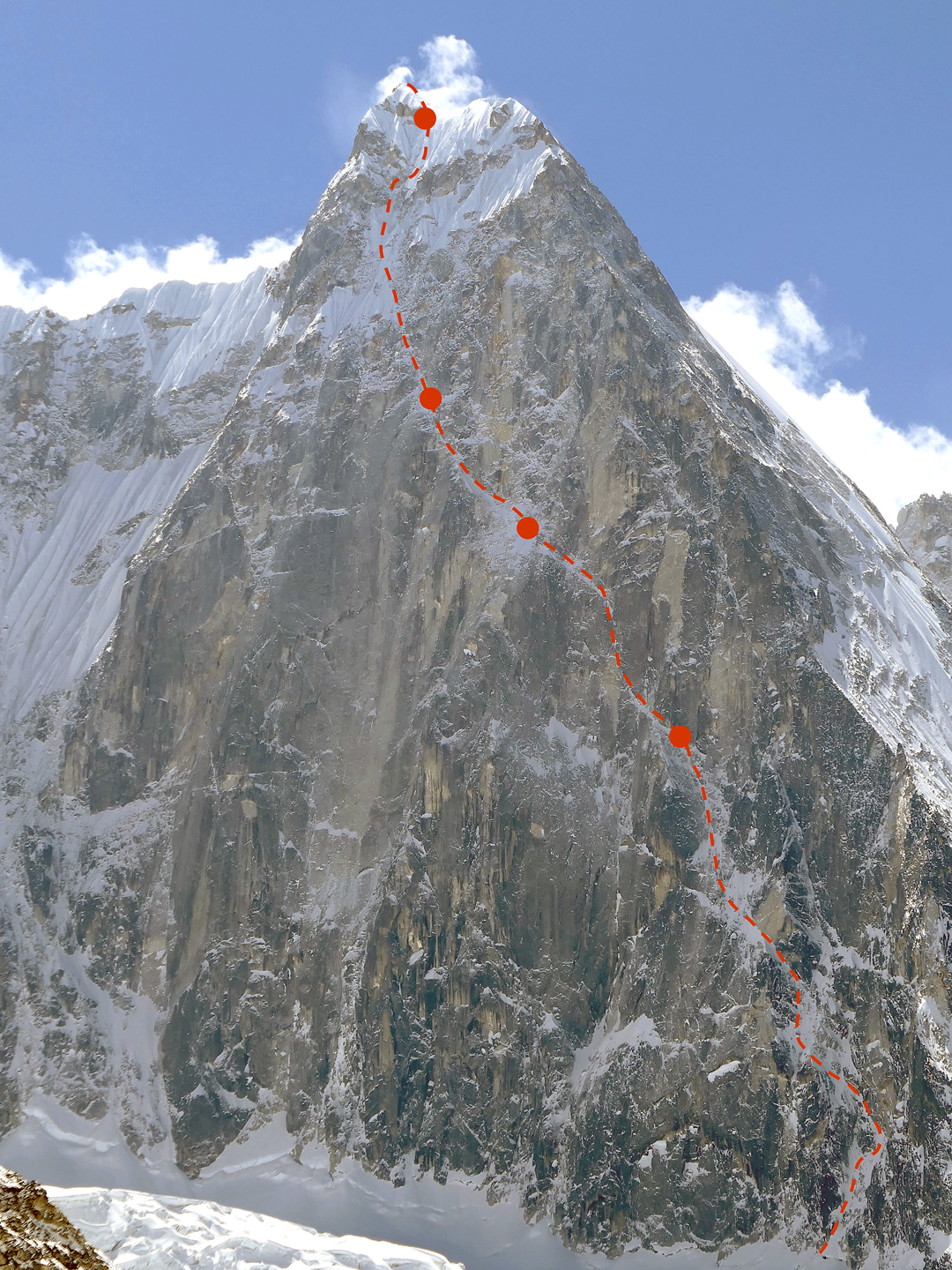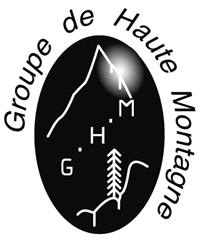©Paul Ramsden
First ascent of Jugal Spire (6,563m), Jugal Himal, via The Phantom Line (1,300m, ED) on the north face, from April 25-29. Descent was effected by traversing the mountain and descending previously unclimbed ground to the south and west.
The Jugal Himal holds the nearest high mountains to Kathmandu but is infrequently visited. Desperate to climb after being curtailed by COVID-19 for two years, Tim Miller and Paul Ramsden from the UK arrived in Nepal in early spring. During the whole of the expedition it would rain, hail, or snow for at least part of every day.
After a four-day approach to base camp, an acclimatization outing on the west ridge of Dorje Lhakpa allowed them to see for the first time the north face of Peak 6,563m (later named Jugal Spire), a huge sweep of very steep granite. Although seemingly the preserve of big wall climbers, careful inspection showed a steep ice line cutting diagonally through the face from bottom right. While most of this line had a suggestion of ice, there was a rock wall at around one-third height that appeared steep and blank.
After the initial day, which involved sections of unprotected and delicate mixed climbing leading to a comfortable bivouac, they reached the steep rock wall. Surprised, they found a series of chimneys hidden behind a line of flakes that gave intense Scottish-style climbing. The following night spindrift avalanches ripped the tent and part of their time was spent standing in the dark until spindrift eventually subsided. The third night was more pleasant, though by now the tent was no longer usable as such, and the two just hid inside the fabric. The fourth bivouac, close to the top of the strenuous bullet-proof ice of the summit slopes, was inside a natural rock cave. Next day, after 37 pitches from the bottom of the face, they crossed the summit, rappelled from Abalakovs to the south, then dropped west down a broad gully to make their last bivouac where it met the glacier. They named the route The Phantom Line due to the ephemeral nature of the ice, and the way the route appeared and disappeared under different light conditions when viewed from a distance. Ramsden felt it was one of the best routes he’d climbed.


















